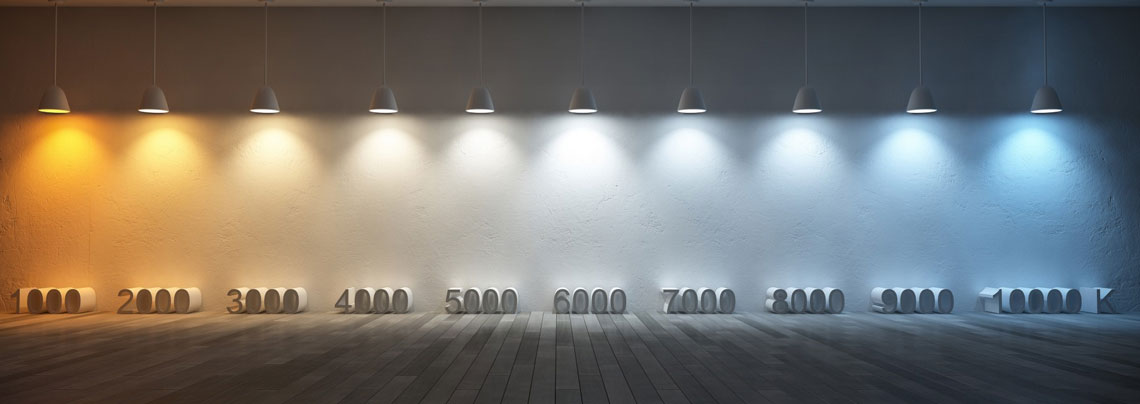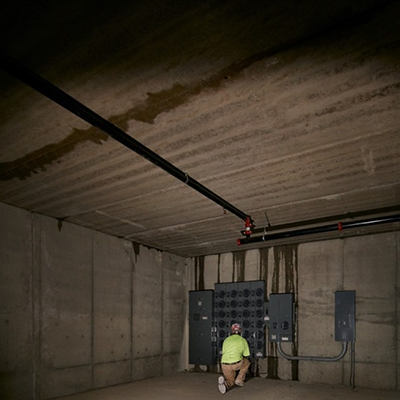Understanding the Colour Temperature of Light in Working Environments…

The colour temperature of light is becoming more of a health and safety issue these days, on site and in most working environments. So, what is ‘the colour temperature of light’? Quite simply, it’s a way to describe the light appearance provided by a light bulb, measured in degrees of Kelvin (K) on a scale from 1,000 to 10,000. You can see from the light bulbs image, at the bottom end of the scale the light is a warm red/yellow colour and at the top end of the scale, a cool blue/purple colour. From a domestic perspective, the ‘mood’ of a room can be heavily influenced by light colour, for example warm yellow colours are ideal for a relaxed living room, whereas cool, bright and crisp blue lighting may be preferred in a bathroom or kitchen.
In a retail environment, light colour plays a big part as it can ‘trick’ the human eye and influence our perception of products. This is clear to see at most of our high street supermarkets, with red colour temperature lighting used on meat counters to make the meat appear fresher for longer. To highlight the warmth and golden appearance of freshly baked bread, yellow colour temperature lighting is used, and cool fresh white lighting is ideal for making fish appear like it was caught just that morning! The colour temperature of light has a part to play in many real-life applications from photography all the way through to horticulture.
But what about lighting on sites and in working environments… or more importantly safe lighting at work. From a health and safety perspective, the colour temperature of work lights has become a determining factor in selecting the correct and appropriate temporary lighting solutions. Having the colour light temperatures as close to natural daylight as possible, is important for many reasons – including:
- Eliminates premature fatigue and keeps the workers more alert for longer.
- The best lighting conditions to highlight defects and imperfections of work.
- Avoids the possibility of tricking the human eye into varying perceptions of colour.

The last point about tricking the human eye is a hugely relevant point; remember ‘the dress’ that went viral with people commenting on what colour the designer dress actually was? Some said it was black and blue, with others insisting it was white and gold. 10 million tweets on Twitter mentioned the dress, from around the globe, with divided opinions. Although the actual colour was finally confirmed to be black and blue, the phenomenon revealed differences in human colour perception – skewed further by the colour temperature of light. You might think, why is this relevant to lighting a work environment? When an electrician is wiring-up, colour becomes very relevant!
So, what is the optimum colour temperature for lighting a work environment? A Kelvin reading of 5,500K to 6,500K is an ideal level, with 6,500K being the closest to natural daylight – see the scale of common colour temperatures. This gives a cool, crisp and refreshing light; ideal conditions for working, reading and inspection. The Maxitek range of LED Site Lighting all have a Kelvin rating of 6,400K, which sits nicely within the recommended parameters of optimum colour temperature of light in a working environment. Other features of the Maxitek LED Site Lighting range include high efficiency, low heat, long-life and resistance to shock.

Click here to view the Maxitek LED Site Lighting range.




